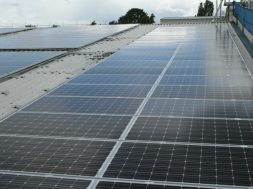
The Indian Captive Power Producers’ Association (ICPPA) alleged that independent power producers did not build up the required inventories which led to the supply crisis
New Delhi : A captive power producers’ association has urged the government for 100 per cent normalisation of coal supply to captive power producers while blaming independent power generators for the coal crisis and “complete crash of whole system”.
The Indian Captive Power Producers’ Association (ICPPA) alleged that independent power producers did not build up the required inventories which led to the supply crisis.
“Today where we have reached is 35-40 per cent of what we should be getting … Right from today let there be 100 per cent normalisation of supplies to captive power plants (CPPs),” Rajiv Agarwal, Secretary General, ICPPA said in a press conference.
IPPs do not build up the inventories for various reasons, as a result the safety stock and the insurance stock as it is called is depleted and subsequently there is a complete crash of the whole system, he said.
“All the coal rakes made for CPPs have virtually stopped,” he said.
IPPs, he said, are not building inventories because they know that if there is a crisis the whole government will help them.
“This is the right time the government should start normalising the supplies because we are getting some feeler is that first they want to build up very high some 30 days inventory by March and after that they will start supplying to CPPs and industries….for next year also the CPP would continue to face problem and will be in crisis,” he explained.
COVID-19 from last year created havoc for industries, infrastructure and the economy, and in such a situation the current coal crisis has been much more worrying factor for captive power, he said.
Out of a total 78,000 mw installed CPP capacity in the country, around 40,000 MW (i.e. 55 per cent) CPPs are thermal-coal based, which require 200 million tonnes (MT) coal per annum.
Significant investments to the tune of 30 billion dollars have been made for setting up these CPPs and associated infrastructure, which have generated 15 lakh direct and in-direct employment.
The CPPs provide grid stability as they operate with minimum T&D losses, reduce demand pressure on the National Grid network, and pump excess power into the grid, thereby contributing to the national energy pool.













